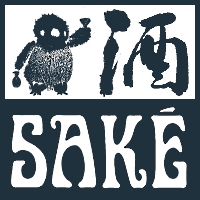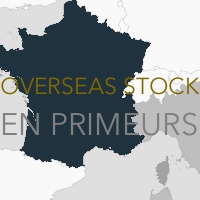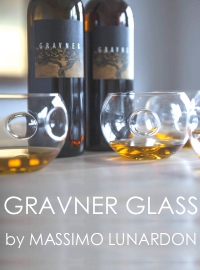 |
 |
 |
 |
限定大吟醸 牧之 Bokushi - Limited Daiginjou
The highest grade of Aoki Shuzo is the 37 series, which includes the Bokushi Daiginjo and the Kakurei Junmai-Daiginjo. Both are made from top-quality Yamada-Nishiki rice sourced from the special A district in Tojo, Hyogo Prefecture, polished to a ratio of 37%. The Bokushi is available in two types: a black bottle released in autumn and a white bottle of genshu (undiluted) that is pasteurized once, released in early summer, while the Junmai-Daiginjo is labeled Kakurei.
The Yamada-Nishiki from Tojo can be likened to Pinot Noir from the Chambertin Grand Cru in Burgundy. Not only does it possess exceptional aroma and flavor, but it also has great ageing potential. This 37 series does not indicate a brewing year (BY), and it is typically released after about three years of ageing in snow chamber. Even after its release, we can expect long-term ageing.
This 37 series, a culmination of the finest rice, top-notch brewing techniques, and the spirit of artisanship, offers an extraordinarily luxurious taste. For those seeking the highest level of sake, this is the only choice. This sake is made to order.
Kakurei 鶴齢 - 300 years
Established in 1717 in an area with the heaviest snowfall in Niigata Japan, Aoki-shuzou has been brewing classy sake. Their Daiginjou is one of the top-ranked artisanal authentic sake in Japan, and their popular editions are most loved at home and at restaurant in Niigata as a premium brand.
Pioneer of "Raw Type" - Unfiltered, Unpasteirized and Undiluted
Generally, sake is pasteurized twice to stabilize the quality, added some water to make the texture smooth, and filtered to make sake clear. However, thanks to the development of transportation technology and improvement of sake making, today Raw type(unfiltered, unpasteirized and undiluted) sake is getting popular in Japan and even in foreign countries. Actually, Aoki-shuzou is well known as a pioneer of this Raw type. In the 90’s, it was still difficult to distribute Raw type in the market, but Aoki-shuzou had successfully set about commercialization of it in 1998. Then, in mid 2010's Aoki-shuzou's Raw Sake had achieved kind of perfection.
Go Further
Sake is made by the finest techniques among all fermented products in the world. "Parallel multiple fermentation", "Distilled alcohol added", "Pasteurization", "Adding water"... all these traditional techniques have been refined continuously since 8th century. Needless to say, Aoki-shuzou possesses all these traditional techniques. Although they have played the role of top runner of Raw type sake making for these 20 years, now they go back to the basics yet again and are trying to integrate traditional skills and modern techniques to make higher level of sake. Obviously Kakurei is getting more preciseness and delicacy year by year. Aoki-shuzou never stops, and Kakurei goes further.
Snow Cellar
Today many breweries implement temperature control by refrigerator or air-conditioning for their cellar. But, those electric systems cannot provide stable temperature. The temperature goes up and goes down in cycles with noise and vibration.
Aoki-shuzou built "snow cellar" to store sake without electricity. This eco-drive snow cellar is an ideal facility for long-term and low temperature ageing. The cellar is kept at 5℃ throughout the year stably, then Kakurei is polished calmly and little by little without any stress, and unnecessary factors are shaved off from sake. Niigata is an area of heavy snowfall, and Aoki-shuzou cleverly utilizes this unlimited nature's bounty with free of charge, and feedback to the collaboration between nature and human, called sake.
|
|
 |
 |
 |
 |

|






















